- Home
- J. K. Rowling
The Hogwarts Library Collection Page 6
The Hogwarts Library Collection Read online
Page 6
YETI
(also known as Bigfoot, the Abominable Snowman)
M.O.M. CLASSIFICATION: XXXX
A native of Tibet, the yeti is believed to be related to the troll, though no one has yet got close enough to conduct the necessary tests. Up to fifteen feet in height, it is covered head to foot in purest white hair. The yeti devours anything that strays into its path, though it fears fire and may be repulsed by skilled wizards.
NEWTON (‘NEWT’) ARTEMIS FIDO SCAMANDER was born in 1897. His interest in fabulous beasts was encouraged by his mother, who was an enthusiastic breeder of fancy Hippogriffs. Upon leaving Hogwarts School of Witchcraft and Wizardry, Mr Scamander joined the Ministry of Magic in the Department for the Regulation and Control of Magical Creatures. After two years at the Office for House-Elf Relocation, years he describes as ‘tedious in the extreme’, he was transferred to the Beast Division, where his prodigious knowledge of bizarre magical animals ensured his rapid promotion.
Although almost solely responsible for the creation of the Werewolf Register in 1947, he says he is proudest of the Ban on Experimental Breeding, passed in 1965, which effectively prevented the creation of new and untameable monsters within Britain. Mr Scamander’s work with the Dragon Research and Restraint Bureau led to many research trips abroad, during which he collected information for his worldwide bestseller Fantastic Beasts and Where to Find Them.
Newt Scamander was awarded the Order of Merlin, Second Class, in 1979 in recognition of his services to the study of magical beasts, Magizoology. Now retired, he lives in Dorset with his wife Porpentina and their pet Kneazles: Hoppy, Milly and Mauler.
All rights reserved; no part of this publication may be reproduced in whole or in part, or transmitted in any form or by any means, electronic, mechanical, photocopying, recording or otherwise, without the prior permission of the publisher
This digital edition first published by Pottermore Limited in 2017
First published in print in Great Britain by Bloomsbury Publishing Plc in 2017
Text © J.K. Rowling 2001, 2017
Cover design © Olly Moss 2016
Interior illustrations by Tomislav Tomic copyright © Bloomsbury Publishing Plc 2017
Harry Potter characters, names and related indicia are trademarks of and © Warner Bros. Entertainment Inc.
J.K. ROWLING’S WIZARDING WORLD™ J.K. Rowling and Warner Bros. Entertainment Inc.
All rights reserved
The moral rights of the author and illustrators have been asserted
Comic Relief (UK) was set up in 1985 by a group of British comedians to raise funds for projects promoting social justice and helping to tackle poverty. Monies from the worldwide sales of this book will go to help children and young people in the UK and around the world, preparing them to be ready for the future – to be safe, healthy, educated and empowered.
Comic Relief (UK) is a registered charity: 326568 (England/Wales); SC039730 (Scotland).
Named after the light-giving spell in the Harry Potter books, Lumos was set up by J.K. Rowling to end the use of orphanages and institutions for vulnerable children around the world by 2050 and ensure all future generations of children can be raised in loving families.
Lumos is the operating name of Lumos Foundation, a company limited by guarantee registered in England and Wales, number 5611912. Registered charity number 1112575.
Source ISBN 978-1-78110-556-6
ISBN 978-1-78110-923-6
A warning: If you rip, tear, shred, bend, fold, deface, disfigure, smear, smudge, throw, drop or in any other manner damage, mistreat or show lack of respect towards this book, the consequences will be as awful as it is within my power to make them.
Irma Pince, Hogwarts Librarian
Praise for Quidditch Through the Ages
‘Kennilworthy Whisp’s painstaking research has uncovered a veritable treasure trove of hitherto unknown facts about the sport of warlocks. A fascinating read.’
Bathilda Bagshot, author, A History of Magic
‘Whisp has produced a thoroughly enjoyable book; Quidditch fans are sure to find it both instructive and entertaining.’
Editor, Which Broomstick?
‘The definitive work on the origins and history of Quidditch. Highly recommended.’
Brutus Scrimgeour, author, The Beaters’ Bible
‘Mr Whisp shows a lot of promise. If he keeps up the good work, he may well find himself sharing a photoshoot with me one of these days!’
Gilderoy Lockhart, author, Magical Me
‘Bet you anything it’ll be a bestseller. Go on, I bet you.’
Ludovic Bagman, England and Wimbourne Wasps Beater
‘I’ve read worse.’
Rita Skeeter, Daily Prophet
With thanks to J. K. Rowling for creating
this book and so generously giving all her
royalties from it to Comic Relief and Lumos
Contents
Foreword by Albus Dumbledore
1. The Evolution of the Flying Broomstick
2. Ancient Broom Games
3. The Game from Queerditch Marsh
4. The Arrival of the Golden Snitch
5. Anti-Muggle Precautions
6. Changes in Quidditch since the Fourteenth Century:
Pitch
Balls
Players
Rules
Referees
7. Quidditch Teams of Britain and Ireland
8. The Spread of Quidditch Worldwide
9. The Development of the Racing Broom
10. Quidditch Today
About the Author
Foreword
QUIDDITCH THROUGH THE AGES is one of the most popular titles in the Hogwarts school library. Madam Pince, our librarian, tells me that it is ‘pawed about, dribbled on and generally maltreated’ nearly every day – a high compliment for any book. Anyone who plays or watches Quidditch regularly will relish Mr Whisp’s book, as do those of us interested in wider wizarding history. As we have developed the game of Quidditch, so it has developed us; Quidditch unites witches and wizards from all walks of life, bringing us together to share moments of exhilaration, triumph and (for those who support the Chudley Cannons) despair.
It was with some difficulty, I must own, that I persuaded Madam Pince to part with one of her books so that it might be copied for wider consumption. Indeed, when I told her it was to be made available to Muggles, she was rendered temporarily speechless and neither moved nor blinked for several minutes. When she came to herself she was thoughtful enough to ask whether I had taken leave of my senses. I was pleased to reassure her on that point and went on to explain why I had taken this unprecedented decision.
Muggle readers will need no introduction to the work of Comic Relief and Lumos, so I now repeat my explanation to Madam Pince for the benefit of witches and wizards who have purchased this book. Comic Relief harnesses laughter to fight poverty and injustice in a most imaginative way. Using it to raise funds to help save and improve lives – a brand of magic to which we all aspire. Lumos, in turn, brings light to the darkest of places, revealing children hidden from the world and guiding them home. By buying this book – and I would advise you to buy it, because if you read it too long without handing over money you will find yourself the object of a Thief’s Curse – you too will be contributing to this magical mission.
I would be deceiving my readers if I said that this explanation made Madam Pince happy about handing over a library book to Muggles. She suggested several alternatives, such as telling the people from Comic Relief and Lumos that the library had burned down, or simply pretending that I had dropped dead without leaving instructions. When I told her that on the whole I preferred my original plan, she reluctantly agreed to hand over the book, though at the point when it came to let go of it, her nerve failed her and I was forced to prise her fingers individually from the spine.
Although I have removed the usual library-book spells from this volume, I cannot promise t
hat every trace has gone. Madam Pince has been known to add unusual jinxes to the books in her care. I myself doodled absent-mindedly on a copy of Theories of Transubstantial Transfiguration last year and next moment found the book beating me fiercely around the head. Please be careful how you treat this book. Do not rip out the pages. Do not drop it in the bath. I cannot promise that Madam Pince will not swoop down on you, wherever you are, and demand a heavy fine.
All that remains is for me to thank you for supporting Comic Relief and Lumos and to beg Muggles not to try Quidditch at home; it is, of course, an entirely fictional sport and nobody really plays it. May I also take this opportunity to wish Puddlemere United the best of luck next season.
Chapter One
The Evolution of the Flying Broomstick
NO SPELL YET DEVISED enables wizards to fly unaided in human form. Those few Animagi who transform into winged creatures may enjoy flight, but they are a rarity. The witch or wizard who finds him- or herself Transfigured into a bat may take to the air, but, having a bat’s brain, they are sure to forget where they want to go the moment they take flight. Levitation is commonplace, but our ancestors were not content with hovering five feet from the ground. They wanted more. They wanted to fly like birds, but without the inconvenience of growing feathers.
We are so accustomed these days to the fact that every wizarding household in Britain owns at least one flying broomstick that we rarely stop to ask ourselves why. Why should the humble broom have become the one object legally allowed as a means of wizarding transport? Why did we in the West not adopt the carpet so beloved of our Eastern brethren? Why didn’t we choose to produce flying barrels, flying armchairs, flying bathtubs – why brooms?
Shrewd enough to see that their Muggle neighbours would seek to exploit their powers if they knew their full extent, witches and wizards kept themselves to themselves long before the International Statute of Wizarding Secrecy came into effect. If they were to keep a means of flight in their houses, it would necessarily be something discreet, something easy to hide. The broomstick was ideal for this purpose; it required no explanation, no excuse if found by Muggles, it was easily portable and inexpensive. Nevertheless, the first brooms bewitched for flying purposes had their drawbacks.
Records show that witches and wizards in Europe were using flying broomsticks as early as AD 962. A German illuminated manuscript of this period shows three warlocks dismounting from their brooms with looks of exquisite discomfort on their faces. Guthrie Lochrin, a Scottish wizard writing in 1107, spoke of the ‘splinter-filled buttocks and bulging piles’ he suffered after a short broom ride from Montrose to Arbroath.
A medieval broomstick on display in the Museum of Quidditch in London gives us an insight into Lochrin’s discomfort (see Fig. A). A thick knotty handle of unvarnished ash, with hazel twigs bound crudely to one end, it is neither comfortable nor aerodynamic. The charms placed upon it are similarly basic: it will only move forwards at one speed; it will go up, down and stop.
Fig. A
As wizarding families in those days made their own brooms, there was enormous variation in the speed, comfort and handling of the transport available to them. By the twelfth century, however, wizards had learned to barter services, so that a skilled maker of brooms could exchange them for the potions his neighbour might make better than himself. Once broomsticks became more comfortable, they were flown for pleasure rather than merely used as a means of getting from point A to point B.
Chapter Two
Ancient Broom Games
BROOM SPORTS EMERGED almost as soon as broomsticks were sufficiently advanced to allow fliers to turn corners and vary their speed and height. Early wizarding writings and paintings give us some idea of the games our ancestors played. Some of these no longer exist; others have survived or evolved into the sports we know today.
The celebrated annual broom race of Sweden dates from the tenth century. Fliers race from Kopparberg to Arjeplog, a distance of slightly over three hundred miles. The course runs straight through a dragon reservation and the vast silver trophy is shaped like a Swedish Short-Snout. Nowadays this is an international event and wizards of all nationalities congregate at Kopparberg to cheer the starters, then Apparate to Arjeplog to congratulate the survivors.
The famous painting Günther der Gewalttätige ist der Gewinner (‘Gunther the Violent is the Winner’), dated 1105, shows the ancient German game of Stichstock. A twenty-foot-high pole was topped with an inflated dragon bladder. One player on a broomstick had the job of protecting this bladder. The bladder-guardian was tied to the pole by a rope around his or her waist, so that he or she could not fly further than ten feet away from it. The rest of the players would take it in turns to fly at the bladder and attempt to puncture it with the specially sharpened ends of their brooms. The bladder-guardian was allowed to use his or her wand to repel these attacks. The game ended when the bladder was successfully punctured, or the bladder-guardian had either succeeded in hexing all opponents out of the running or collapsed from exhaustion. Stichstock died out in the fourteenth century.
In Ireland the game of Aingingein flourished, the subject of many an Irish ballad (the legendary wizard Fingal the Fearless is alleged to have been an Aingingein champion). One by one the players would take the Dom, or ball (actually the gall bladder of a goat), and speed through a series of burning barrels set high in the air on stilts. The Dom was to be thrown through the final barrel. The player who succeeded in getting the Dom through the last barrel in the fastest time, without having caught fire on the way, was the winner.
Scotland was the birthplace of what is probably the most dangerous of all broom games – Creaothceann. The game features in a tragic Gaelic poem of the eleventh century, the first verse of which says, in translation:
The players assembled, twelve fine, hearty men,
They strapped on their cauldrons, stood poised to fly,
At the sound of the horn they were swiftly airborne
But ten of their number were fated to die.
Creaothceann players each wore a cauldron strapped to the head. At the sound of the horn or drum, up to a hundred charmed rocks and boulders that had been hovering a hundred feet above the ground began to fall towards the earth. The Creaothceann players zoomed around trying to catch as many rocks as possible in their cauldrons. Considered by many Scottish wizards to be the supreme test of manliness and courage, Creaothceann enjoyed considerable popularity in the Middle Ages, despite the huge number of fatalities that resulted from it. The game was made illegal in 1762, and though Magnus ‘Dent-Head’ Macdonald spearheaded a campaign for its reintroduction in the 1960s, the Ministry of Magic refused to lift the ban.
Shuntbumps was popular in Devon, England. This was a crude form of jousting, the sole aim being to knock as many other players as possible off their brooms, the last person remaining on their broom winning.
Swivenhodge began in Herefordshire. Like Stichstock, this involved an inflated bladder, usually a pig’s. Players sat backwards on their brooms and batted the bladder backwards and forwards across a hedge with the brush ends of their brooms. The first person to miss gave their opponent a point. First to reach fifty points was the winner.
Swivenhodge is still played in England, though it has never achieved much widespread popularity; Shuntbumps survives only as a children’s game. At Queerditch Marsh, however, a game had been created that would one day become the most popular in the wizarding world.
Chapter Three
The Game from Queerditch Marsh
WE OWE OUR KNOWLEDGE of the rude beginnings of Quidditch to the writings of the witch Gertie Keddle, who lived on the edge of Queerditch Marsh in the eleventh century. Fortunately for us, she kept a diary, now in the Museum of Quidditch in London. The excerpts below have been translated from the badly spelled Saxon of the original.
Tuesday. Hot. That lot from across the marsh have been at it again. Playing a stupid game on their broomsticks. A big leather ball landed in my ca
bbages. I hexed the man who came for it. I’d like to see him fly with his knees on back to front, the great hairy hog.
Tuesday. Wet. Was out on the marsh picking nettles. Broomstick idiots playing again. Watched for a bit from behind a rock. They’ve got a new ball. Throwing it to each other and trying to stick it in trees at either end of the marsh. Pointless rubbish.
Tuesday. Windy. Gwenog came for nettle tea, then invited me out for a treat. Ended up watching those numbskulls playing their game on the marsh. That big Scottish warlock from up the hill was there. Now they’ve got two big heavy rocks flying around trying to knock them all off their brooms. Unfortunately didn’t happen while I was watching. Gwenog told me she often played herself. Went home in disgust.
These extracts reveal much more than Gertie Keddle could have guessed, quite apart from the fact that she only knew the name of one of the days of the week. Firstly, the ball that landed in her cabbage patch was made of leather, as is the modern Quaffle – naturally, the inflated bladder used in other broom games of the period would be difficult to throw accurately, particularly in windy conditions. Secondly, Gertie tells us that the men were ‘trying to stick it in trees at either end of the marsh’ – apparently an early form of goalscoring. Thirdly, she gives us a glimpse of the forerunners of Bludgers. It is immensely interesting that there was a ‘big Scottish warlock’ present. Could he have been a Creaothceann player? Was it his idea to bewitch heavy rocks to zoom dangerously around the pitch, inspired by the boulders used in his native game?

 Harry Potter and the Philosophers Stone
Harry Potter and the Philosophers Stone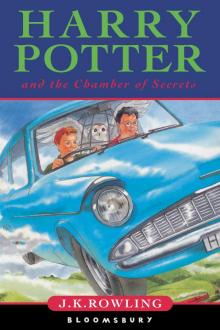 Harry Potter and the Chamber of Secrets
Harry Potter and the Chamber of Secrets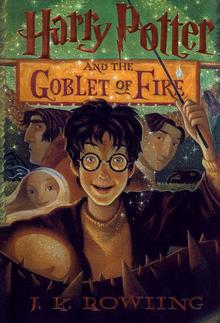 Harry Potter and the Goblet of Fire
Harry Potter and the Goblet of Fire Harry Potter and the Deathly Hallows
Harry Potter and the Deathly Hallows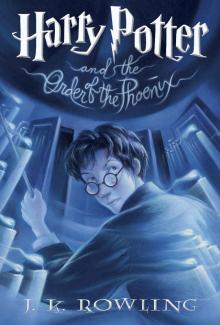 Harry Potter and the Order of the Phoenix
Harry Potter and the Order of the Phoenix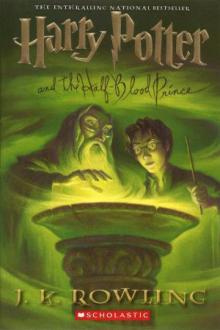 Harry Potter and the Half-Blood Prince
Harry Potter and the Half-Blood Prince Harry Potter and the Prisoner of Azkaban
Harry Potter and the Prisoner of Azkaban Fantastic Beasts and Where to Find Them
Fantastic Beasts and Where to Find Them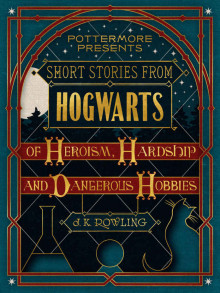 Short Stories from Hogwarts of Heroism, Hardship and Dangerous Hobbies
Short Stories from Hogwarts of Heroism, Hardship and Dangerous Hobbies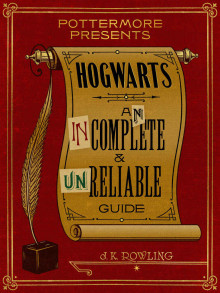 Hogwarts: An Incomplete and Unreliable Guide
Hogwarts: An Incomplete and Unreliable Guide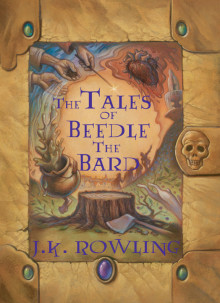 The Tales of Beedle the Bard
The Tales of Beedle the Bard The Casual Vacancy
The Casual Vacancy Harry Potter and the Cursed Child
Harry Potter and the Cursed Child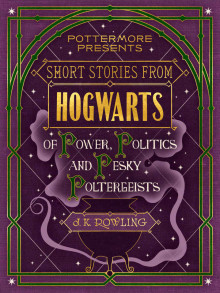 Short Stories from Hogwarts of Power, Politics and Pesky Poltergeists
Short Stories from Hogwarts of Power, Politics and Pesky Poltergeists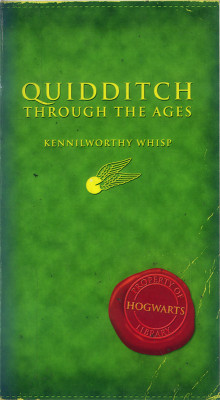 Quidditch Through the Ages
Quidditch Through the Ages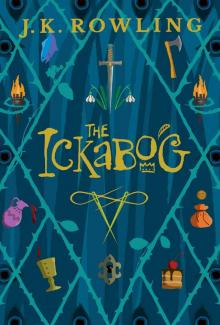 The Ickabog
The Ickabog![Fantastic Beasts, The Crimes of Grindelwald [UK] Read online](http://i1.bookreadfree.com/i/03/19/fantastic_beasts_the_crimes_of_grindelwald_uk_preview.jpg) Fantastic Beasts, The Crimes of Grindelwald [UK]
Fantastic Beasts, The Crimes of Grindelwald [UK]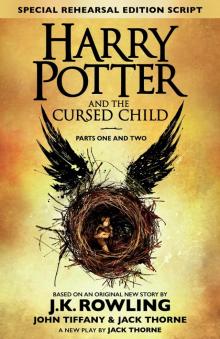 Harry Potter and the Cursed Child: Parts One and Two
Harry Potter and the Cursed Child: Parts One and Two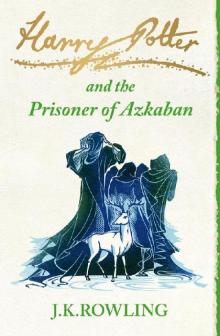 The Prisoner of Azkaban
The Prisoner of Azkaban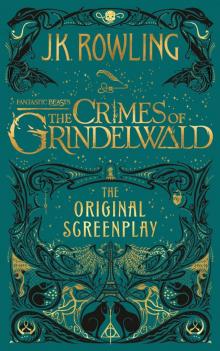 Fantastic Beasts: The Crimes of Grindelwald
Fantastic Beasts: The Crimes of Grindelwald The Hogwarts Library Collection
The Hogwarts Library Collection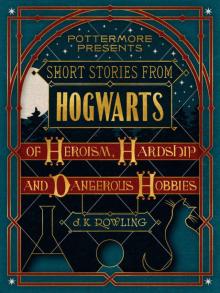 Short Stories from Hogwarts of Heroism, Hardship and Dangerous Hobbies (Kindle Single) (Pottermore Presents)
Short Stories from Hogwarts of Heroism, Hardship and Dangerous Hobbies (Kindle Single) (Pottermore Presents)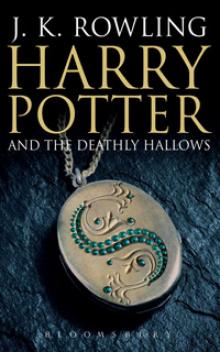 Harry Potter and the Deathly Hallows hp-7
Harry Potter and the Deathly Hallows hp-7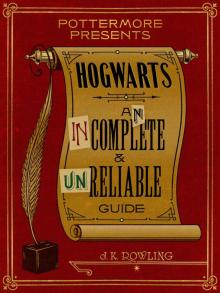 Hogwarts: An Incomplete and Unreliable Guide (Kindle Single) (Pottermore Presents)
Hogwarts: An Incomplete and Unreliable Guide (Kindle Single) (Pottermore Presents)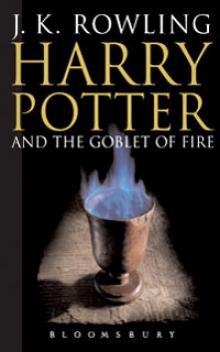 Harry Potter and the Goblet of Fire hp-4
Harry Potter and the Goblet of Fire hp-4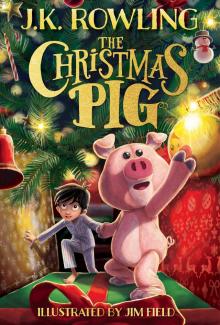 The Christmas Pig
The Christmas Pig Harry Potter and the Sorcerer's Stone
Harry Potter and the Sorcerer's Stone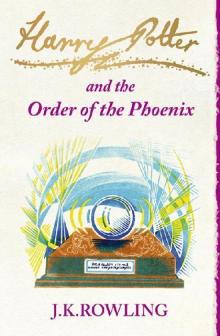 The Order of the Phoenix
The Order of the Phoenix Harry Potter and the Prisoner of Azkaban hp-3
Harry Potter and the Prisoner of Azkaban hp-3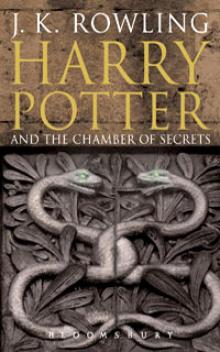 Harry Potter and the Chamber of Secrets hp-2
Harry Potter and the Chamber of Secrets hp-2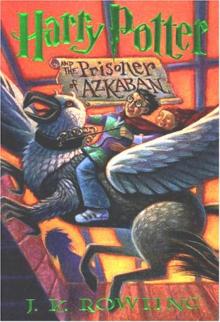 HP 3 - Harry Potter and the Prisoner of Azkaban
HP 3 - Harry Potter and the Prisoner of Azkaban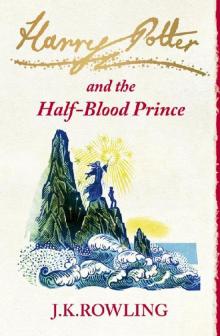 The Half-Blood Prince
The Half-Blood Prince The Hogwarts Collection
The Hogwarts Collection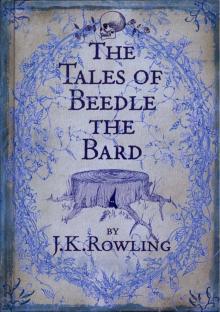 Tales of Beedle the Bard
Tales of Beedle the Bard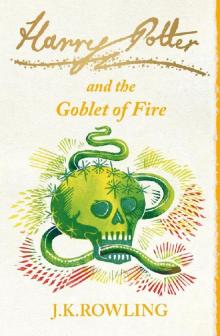 The Goblet of Fire
The Goblet of Fire Harry Potter and the Half-Blood Prince hp-6
Harry Potter and the Half-Blood Prince hp-6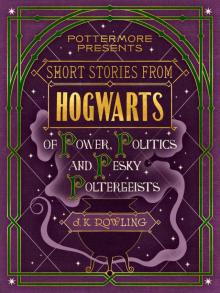 Short Stories from Hogwarts of Power, Politics and Pesky Poltergeists (Kindle Single) (Pottermore Presents)
Short Stories from Hogwarts of Power, Politics and Pesky Poltergeists (Kindle Single) (Pottermore Presents)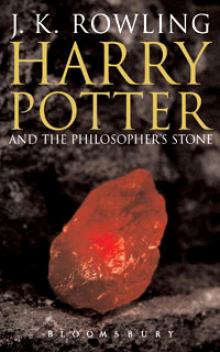 Harry Potter and the Sorcerer's Stone hp-1
Harry Potter and the Sorcerer's Stone hp-1